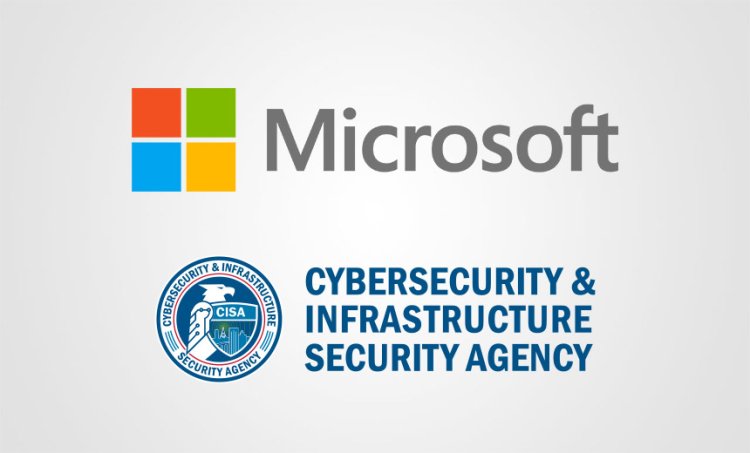CISA and Microsoft Urge Immediate Action on Critical Windows NTFS Vulnerability (CVE-2025-24993)
The U.S. Cybersecurity and Infrastructure Security Agency (CISA) and Microsoft have issued urgent advisories regarding a critical heap-based buffer overflow vulnerability (CVE-2025-24993) in Windows NTFS. This flaw, exploited via malicious VHD files, allows attackers to execute arbitrary code and escalate privileges to SYSTEM-level access. Both organizations recommend applying the March 2025 patch immediately to prevent exploitation, as the vulnerability is already being actively targeted.

Urgent Cybersecurity Alert: Heap-Based Buffer Overflow Vulnerability in Windows NTFS (CVE-2025-24993)
The U.S. Cybersecurity and Infrastructure Security Agency (CISA) and Microsoft have issued critical warnings regarding a significant vulnerability in the Windows New Technology File System (NTFS). This flaw, identified as CVE-2025-24993, is a heap-based buffer overflow that could allow attackers to execute arbitrary code locally on affected systems. The vulnerability was first disclosed as part of Microsoft's March 2025 Patch Tuesday update and has since been flagged as a high-severity threat with a CVSS score of 7.8.
What Is CVE-2025-24993?
CVE-2025-24993 is a vulnerability that arises from improper memory handling within the NTFS file system, which is responsible for managing file storage on Windows operating systems. The flaw occurs due to a heap-based buffer overflow, a type of error in which more data is written to a memory block than it can handle. This causes adjacent memory areas to be overwritten, creating an opportunity for attackers to corrupt memory structures and execute arbitrary code with local user privileges.
Attackers can exploit this vulnerability by crafting malicious Virtual Hard Disk (VHD) files that, when mounted by a user, trigger the buffer overflow. These malicious VHD files can be distributed through phishing campaigns, compromised USB drives, or other social engineering tactics. Once mounted, the vulnerability allows the attacker to escalate privileges to SYSTEM-level access, potentially compromising the entire system.
Exploitability and Real-World Use
While there are no reports of CVE-2025-24993 being explicitly tied to ransomware campaigns at this time, security researchers have confirmed that it is actively being exploited. The vulnerability has been detected in multi-stage attacks, often used alongside other flaws in NTFS or Microsoft Management Console (MMC) exploits, such as CVE-2025-26633. According to research by Trend Micro, more than 600 organizations have been targeted, highlighting the potential for widespread exploitation.
Furthermore, the vulnerability has been associated with the PipeMagic backdoor, a remote-access tool that allows attackers to control compromised systems. This connection underscores the severity of the issue, as attackers can use this flaw to gain persistent access and escalate attacks across vulnerable networks.
Remediation and Mitigation Measures
Microsoft has already released security patches as part of its March 2025 update to address the flaw. These patches fix the heap-based buffer overflow by adding stricter memory validation checks during VHD operations. However, the vulnerability remains a significant risk for any unpatched systems.
CISA has added CVE-2025-24993 to its Known Exploited Vulnerabilities (KEV) catalog, meaning that federal agencies are required to apply patches by April 1, 2025. For organizations outside of the federal sector, cybersecurity experts advise implementing the following measures:
- Deploy Patches: Apply Microsoft’s security updates across all affected Windows systems, especially servers and endpoints that are most likely to be targeted.
- Educate Users: Train employees and users to avoid mounting unsolicited VHD files, particularly those received via email or external drives.
- Monitor File Activity: Use endpoint detection and response tools to identify unusual activity related to VHD files, particularly mounting operations that seem suspicious.
- Segment Legacy Systems: Isolate outdated systems still using older file systems like FAT32 to limit potential attack surfaces.
- Enforce Network Segmentation: Segment networks to contain and mitigate the potential impact of exploitation, particularly in environments with mixed OS versions.
The Risks of Delayed Action
As confirmed by both Microsoft and CISA, CVE-2025-24993 is an actively exploited vulnerability, which increases the urgency for organizations to take action. Delaying patching or failing to apply mitigations could lead to severe consequences, including unauthorized access to sensitive data, lateral movement within networks, and potentially ransomware infections if the flaw is chained with other vulnerabilities.
Researchers have noted that the exploitation of this vulnerability highlights the growing trend of combining file system flaws with privilege escalation techniques to bypass security defenses. This convergence of vulnerabilities creates a dangerous environment for enterprises, making it imperative for organizations to remain vigilant and proactive.
Conclusion
With the release of Microsoft’s patches and CISA’s binding directive for federal agencies, the time to act is now. Organizations must prioritize the application of security updates and take all necessary steps to protect their systems from the risks associated with CVE-2025-24993. As cyber threats evolve, it is critical to stay ahead of potential vulnerabilities like this one to safeguard networks and prevent breaches.
While this flaw may not yet be tied to a major ransomware campaign, its exploitation in ongoing cyberattacks serves as a stark reminder of the importance of timely patching, user awareness, and robust cybersecurity practices.













